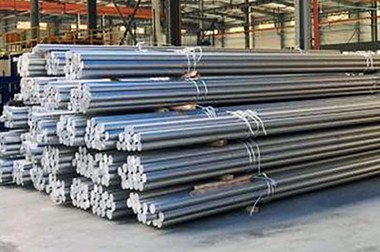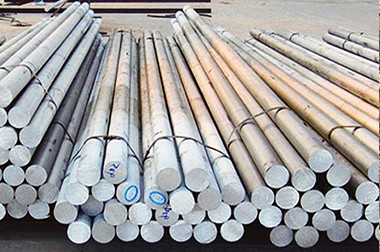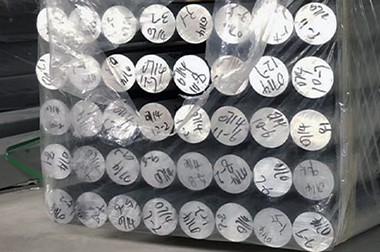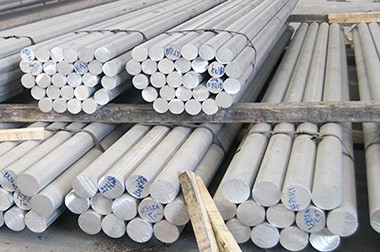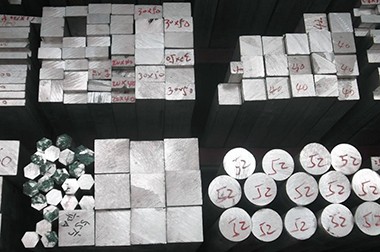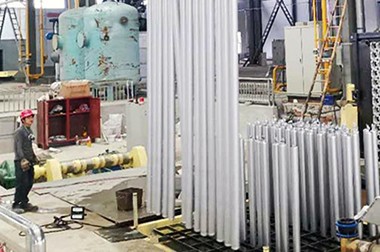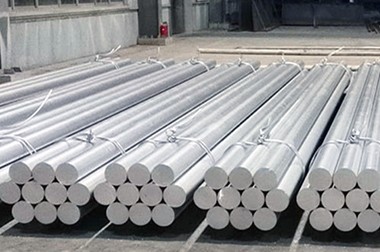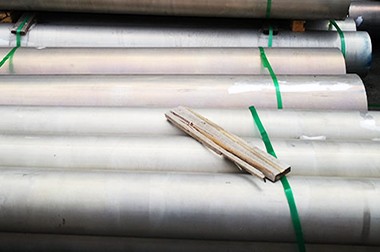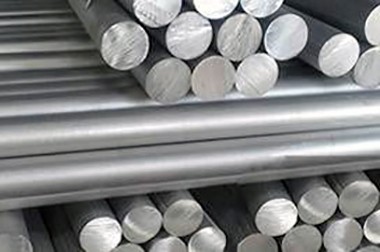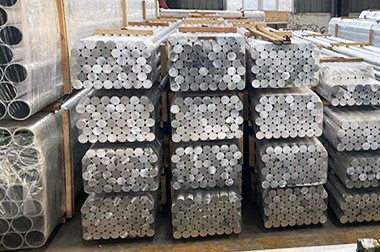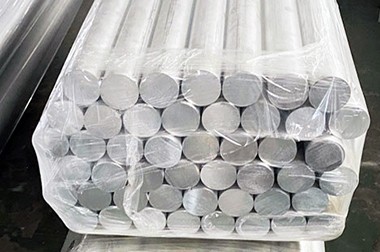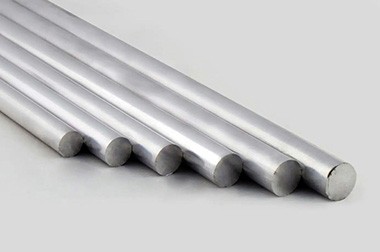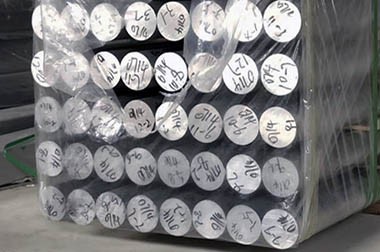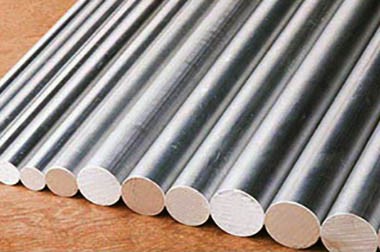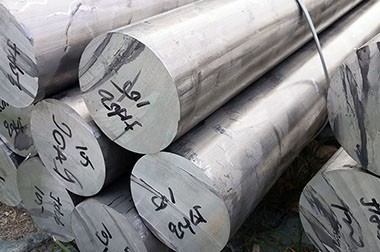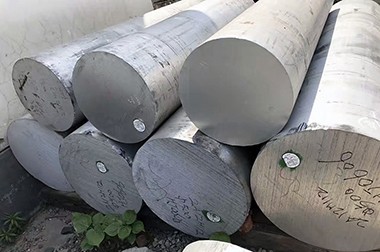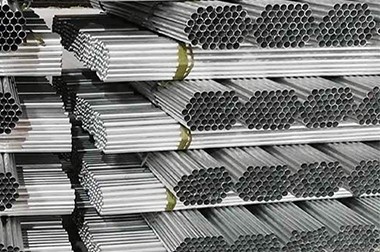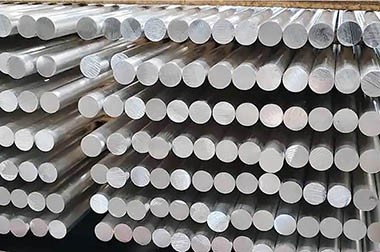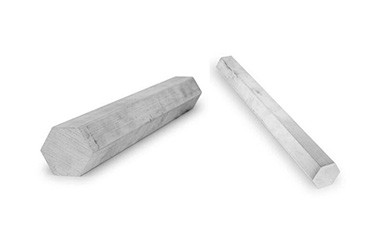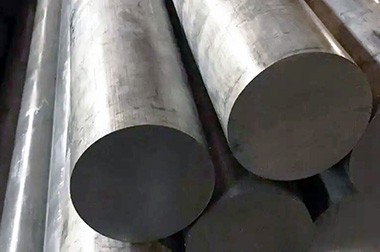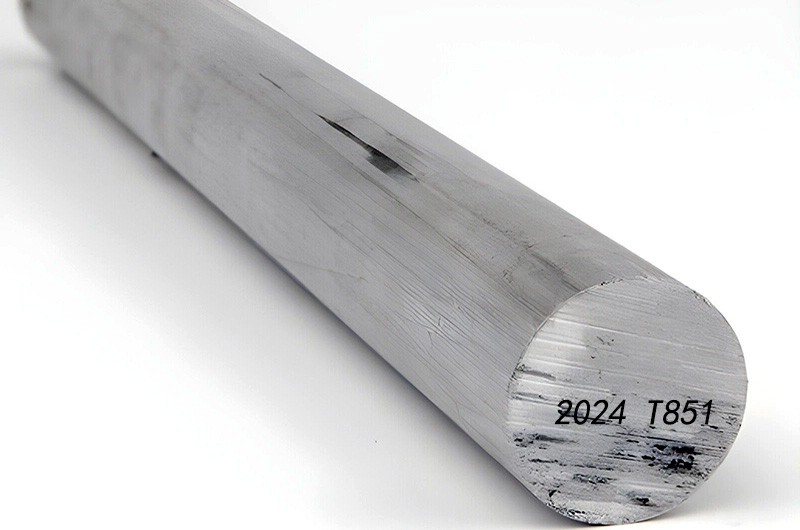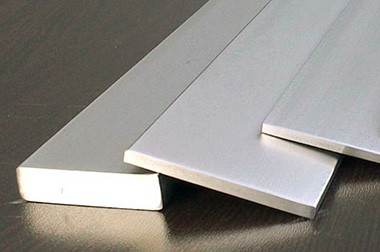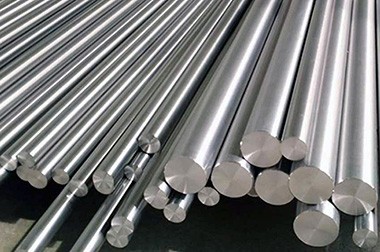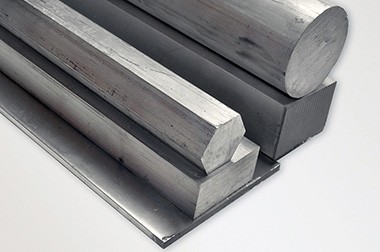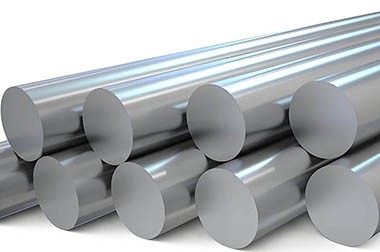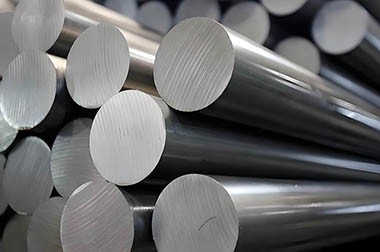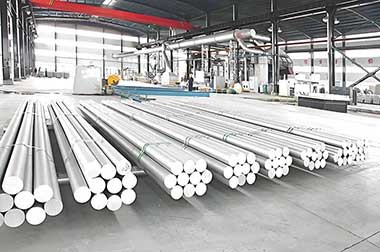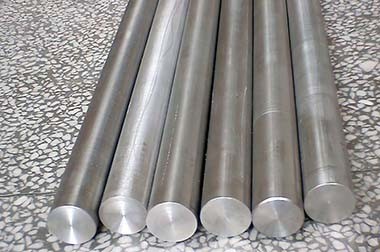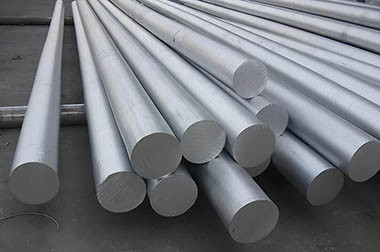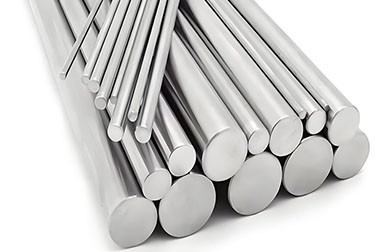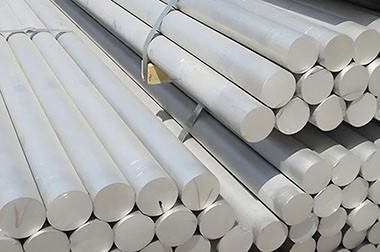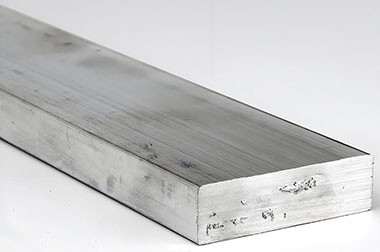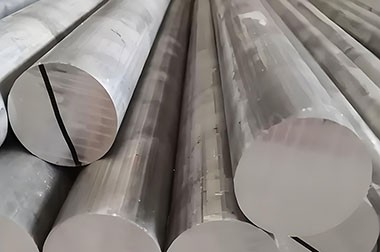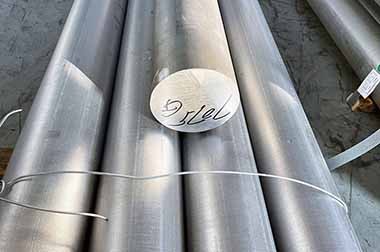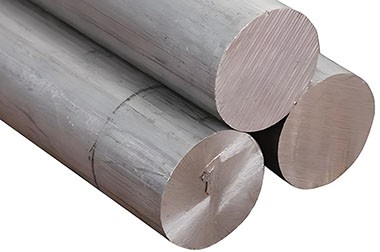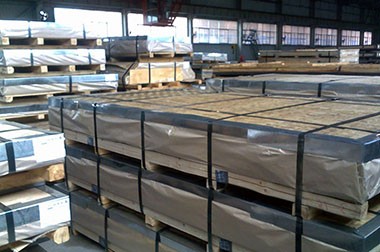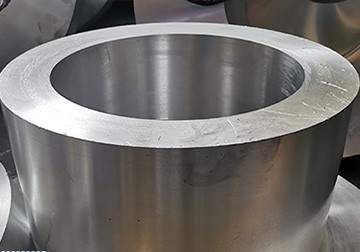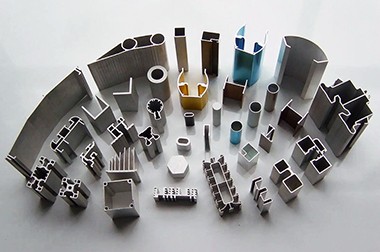2014 T3 T6511 Aerospace Aluminum Rod Bar
The 2014 aerospace aluminum rod is a widely used aluminum alloy material in the aerospace industry, belonging to the 2XXX series of aluminum alloys, which primarily consists of copper as the main alloying element. The 2014 aluminum alloy has significant advantages in high-stress environments due to its excellent strength and fatigue resistance.
2014 aluminum alloy is a high-strength, heat-treatable material primarily used in aerospace applications. It has excellent machinability, making it suitable for manufacturing complex components.
- Standard: ASTM B211 (bars, rods), AMS 4127 (aerospace).
- Trade Names/Equivalents: Alcoa 2014, UNS A92014.
2014 aluminum bars are high-strength, heat-treatable alloys, making them highly suitable for aerospace and military applications. The copper content enhances strength but limits weldability and corrosion resistance, necessitating protective treatments. Available in T4/T6 temper, they offer excellent machinability and comply with ASTM/AMS standards.
Haomei Aluminum can produce AMS 4153 UNS A92014 QQA 200/2 2014 aerospace aluminum rod.
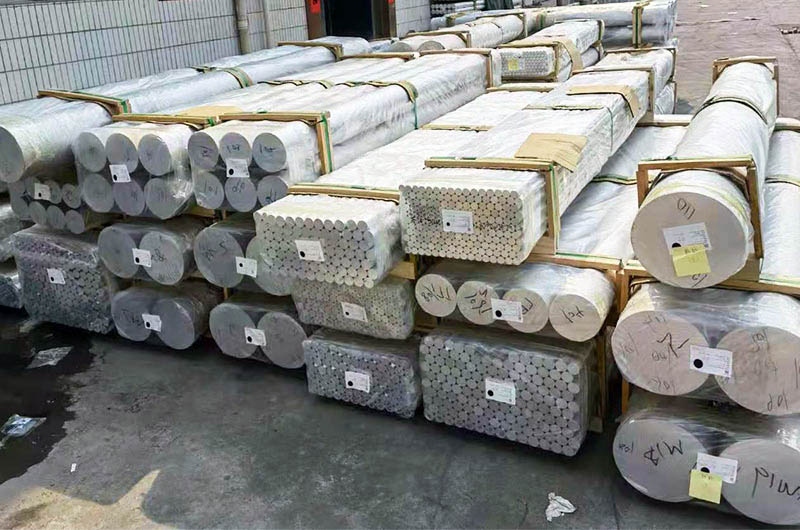
Characteristics of 2014 Aerospace Aluminum Rod Bar
- High Strength: The 2014 aluminum rod is known for its high strength, especially after heat treatment, which significantly enhances its strength, making it widely used in aerospace and military applications.
- Good Fatigue Strength: The material exhibits excellent fatigue strength under dynamic loads, making it suitable for long-term use.
- Machinability: The 2014 aluminum rod has good machinability, allowing for processes like cutting and drilling, while also possessing excellent thermal forming capabilities.
- Lower Corrosion Resistance: The corrosion resistance of 2014 aluminum alloy is relatively poor, especially when exposed to moisture or saltwater environments; therefore, surface treatment or coating is usually required to enhance its corrosion resistance.
- Heat Treatable: The 2014 aluminum alloy can further enhance its mechanical properties through heat treatment processes such as quenching and aging.
- Good Weldability: Although the weldability of the 2014 aluminum alloy is not as good as some other aluminum alloys, it can still be joined using suitable welding techniques.
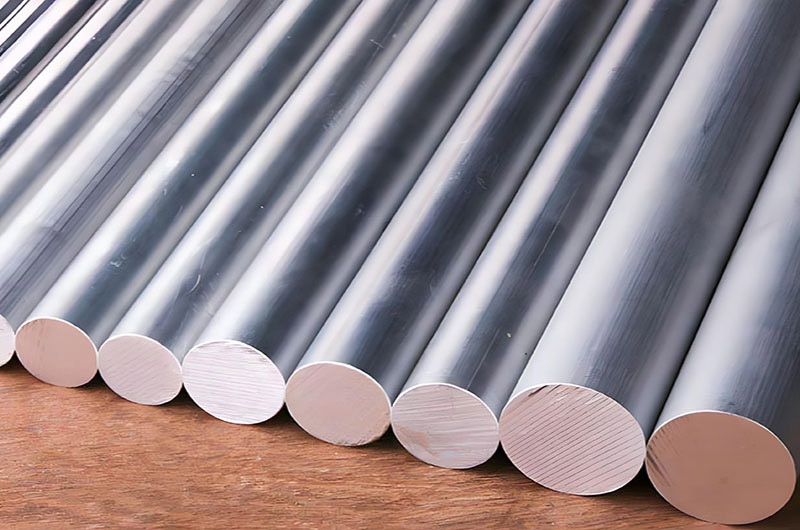
Haomei 2014 Aluminum Bar Types
| Product Name | Description |
| 2014 T651 Extruded Aluminum Round Bar | The 2014 T651 extruded aluminum round bar is a high-strength, heat-treated alloy widely used in the aerospace industry. This alloy offers excellent machinability and fatigue resistance, making it suitable for components requiring strength and precision, such as aircraft structural parts and fasteners. The T651 temper is achieved through solution heat treatment and stress-relieving processes, ensuring the bar has minimal residual stress and a uniform, consistent structure. The round bar shape provides great flexibility in processing and manufacturing. |
| 2014 T351 Extruded Aluminum Square Bar | The 2014 T351 extruded aluminum square bar is designed for applications requiring a balance of strength, formability, and machinability. This alloy is particularly suitable for aerospace, military, and automotive fields, offering very high strength. The T351 temper is achieved through solution heat treatment followed by cold working, which results in a higher strength compared to other tempers, while maintaining good fatigue and stress resistance. The square section makes it ideal for structural components, brackets, and other parts requiring precise dimensions. |
| 2014 T6 Extruded Aluminum Flat Bar | The 2014 T6 extruded aluminum flat bar is known for its excellent strength-to-weight ratio, making it widely used in aerospace and automotive industries. The T6 temper is achieved through heat treatment, providing increased strength, hardness, and wear resistance. The flat bar shape makes it easy to integrate into flat or curved components and is commonly used for structural supports, reinforcements, and other applications that require uniform strength and durability. It is suitable for processing into various custom shapes. |
| 2014 T6 Extruded Aluminum Hexagonal Bar | The 2014 T6 extruded aluminum hexagonal bar features excellent mechanical properties, particularly in strength and fatigue resistance, which are crucial for aerospace applications. The hexagonal cross-section offers advantages in structural applications as it efficiently utilizes space and distributes load. Like other T6 temper aluminum alloys, it undergoes heat treatment to maximize its strength and hardness, making it highly resistant to deformation under stress. It is commonly used for manufacturing brackets, connectors, and structural components. |
| 2014 T6511 Aerospace Aluminum Round Bar | The 2014 T6511 aerospace aluminum round bar is a high-quality alloy designed specifically for the aerospace industry. This round bar undergoes solution heat treatment and stress-relieving processes to provide outstanding mechanical properties, including high tensile strength and excellent fatigue resistance. It is commonly used in aerospace components that require precision and strength, such as aircraft frames, landing gear parts, and wing spars. The T6511 temper ensures the alloy remains stable under harsh conditions while maintaining high dimensional accuracy. |
| 2014 Forged Aluminum Round Bar | The 2014 forged aluminum round bar is produced through a forging process, which enhances the material’s strength and toughness, making it suitable for high-stress applications. Forging aligns the grain structure of the material, improving mechanical properties such as fatigue and impact resistance. This round bar is commonly used in high-performance components in the aerospace and automotive industries, including structural elements and engine parts. Its superior strength makes it ideal for critical applications that require high load-bearing capacity. |
| 2014 Aluminum Cast Round Bar | The 2014 aluminum cast round bar is produced through a casting process, a cost-effective way to manufacture complex shapes. Although it does not offer the same strength and toughness as forged or extruded bars, it still provides good durability and can be used for lower-demand aerospace applications. Cast round bars are commonly used for parts that require complex shapes and reduced processing time. The 2014 alloy in this form offers good strength, corrosion resistance, and machinability, making it suitable for both structural and non-structural applications. |
Chemical composition of 2014 aerospace aluminum alloy
| Element | Composition % |
| Si | 0.15-1.2 |
| Fe | 0.7 |
| Cu | 3.9-5.0 |
| Mn | 0.40-1.2 |
| Mg | 0.20-0.8 |
| Ti | 0.15 |
| Cr | 0.10 |
| Zn | 0.25 |
| Other (Each) | 0.0-0.05 |
| Aluminium (Al) | Balance |
Mechanical properties of 2014 aerospace high quality rod bar
| Mechanical property | Value |
| Tensile strength | 415MPa |
| Yield strength | 370 Min MPa |
| Electrical conductivity | 34%-50% IACS |
2014 Aerospace Aluminum Rod Bar Heat Treatment Conditions
The typical heat treatment conditions for 2014 aluminum rods include T3, T4, and T6, each of which has different performance characteristics and applicable scenarios.
T3 and T4 conditions are suitable for applications requiring good toughness and medium strength.
T6 condition, on the other hand, is suitable for situations that require extremely high strength but relatively low toughness.
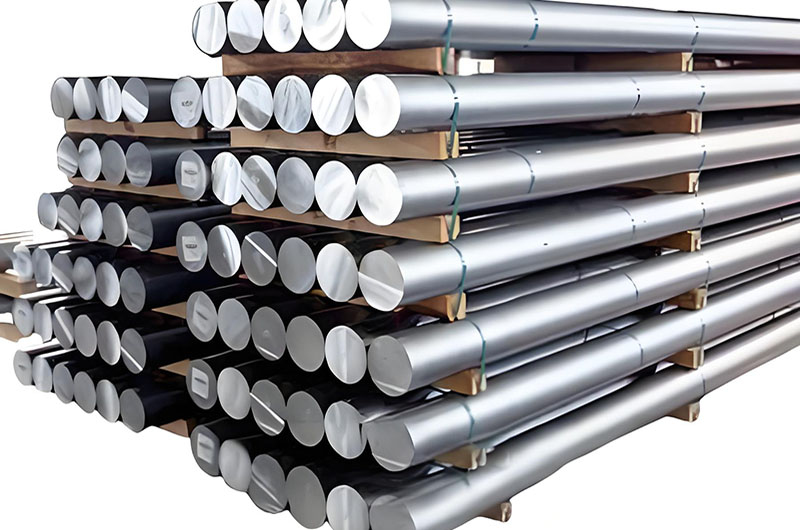
2014 T3 Aerospace Aluminum Rod Bar
The T3 condition refers to the state where the aluminum alloy undergoes solution treatment, is rapidly cooled, and is naturally aged at room temperature.
Characteristics of 2014 T3 Aluminum Rod Bar
- Strength: The aluminum alloy in T3 condition has a high tensile strength, making it suitable for bearing significant mechanical loads.
- Toughness: Compared to the T6 condition, the T3 condition has better toughness, maintaining certain performance under impact and deformation.
Application: Due to its good overall performance, the 2014 aluminum rod in T3 condition is commonly used in aircraft structural components, load-bearing parts, and applications requiring certain toughness.
2014 T4 Aerospace Aluminum Rod Bar
The T4 condition refers to the state where the aluminum alloy undergoes solution treatment and natural aging.
Characteristics of 2014 T4 Aluminum Rod Bar
- Strength: The T4 condition provides medium strength, generally lower than T3 and T6 conditions, but still suitable for many medium-load applications.
- Toughness: The T4 condition of the aluminum alloy exhibits good toughness, able to resist a certain degree of impact and deformation.
Application: Suitable for applications requiring good formability and subsequent processing, such as manufacturing complex-shaped components and structures.
2014 T6 Aerospace Aluminum Rod Bar
The T6 condition refers to the state where the aluminum alloy undergoes solution treatment followed by artificial aging to enhance hardness.
Characteristics of 2014 T6 Aluminum Rod Bar
- Strength: The T6 condition of the aluminum alloy provides maximum strength, being the highest strength heat-treated state for 2014 aluminum alloy.
- Toughness: Due to its high strength, the toughness of T6 condition is relatively lower, potentially exhibiting brittleness under high-stress concentrations or impact loads.
Application: T6 condition aluminum rods are widely used in structural and load-bearing components that require high strength, such as critical structural components in aerospace, racing, and high-performance mechanical parts.
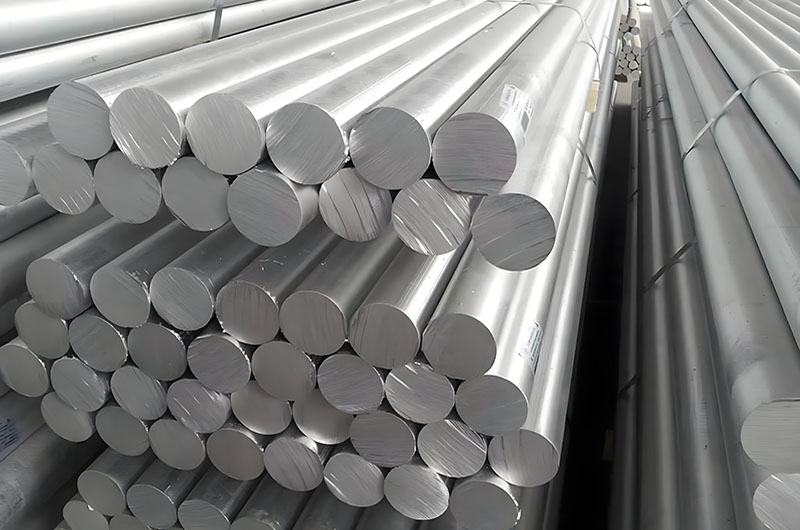
2014 Aluminum Bar Applications
Aerospace Industry: Used in the manufacturing of aircraft fuselage frames, wing components, and engine parts.
2014 Aerospace Aluminum Rod Bar Applications
The 2014 aluminum rod is widely used in the aerospace field, especially because of its high strength, lightweight, and excellent machinability, making it very suitable for parts of aircraft structures that need to withstand high loads.
Airframe Structure
The 2014 aluminum rod is commonly used to manufacture the main load-bearing structural components of aircraft, such as fuselage frames and wing beams. These components need to bear immense mechanical stress while maintaining a low weight. The high strength and good fatigue performance of the 2014 aluminum rod provide long-term structural support.
- Wing Main Beam: The main beam of the wing is the most crucial load-bearing component of an aircraft's wing, supporting lift, gravity, and aerodynamic loads generated during flight. After undergoing T6 heat treatment, the 2014 aluminum rod provides extremely high tensile strength and fatigue strength, ensuring the safety and durability of the wing.
- Fuselage Frame: In the frame structure of the aircraft fuselage, the 2014 aluminum rod is commonly used for the ribs and stringers. These structures need to withstand deformation and stress during flight, requiring extremely high material strength. The strength and rigidity of 2014 aluminum make it an ideal choice.
Aircraft Landing Gear
The landing gear is one of the most critical components of an aircraft, as it must not only support the aircraft's weight but also withstand the strong impact during landing. The high strength and fatigue resistance of 2014 aluminum alloy make it applicable in certain parts of the landing gear, particularly in structural components such as support arms, bearings, and joints.
- Landing Gear Strut: The strut is the core component of the landing gear, directly supporting the weight of the aircraft. The high tensile strength and rigidity of the 2014 aluminum rod ensure the stability of the strut during prolonged use.
- Joints and Hinges: These components play a critical role in the extension and retraction of the landing gear, requiring materials that not only have high strength but also good wear resistance. The 2014 aluminum rod meets these requirements.
Aircraft Fuselage Panel Connectors
Although the 2014 aluminum rod is not directly used for thin sheet manufacturing, its high strength makes it an important material in certain thick plate structures and connection points, especially in the connections between skin and support structures.
These connectors need to possess good machinability and high strength to withstand tensile and shear stresses generated during flight. The 2014 aluminum rod performs excellently in processing and connection.
Aircraft Engine Components
Although the 2014 aluminum rod is not suitable for high-temperature environments, it is still applicable in certain non-high-temperature bearing components, due to its strength and lightweight characteristics.
Connecting Shafts and Brackets: Certain brackets and connecting components in the engine require high strength and fatigue resistance, making the 2014 aluminum rod a suitable choice.
Solar Panel Brackets
These brackets need to maintain an extremely lightweight to reduce impact on launch weight, and the lightweight and high-strength characteristics of the 2014 aluminum rod give it a competitive advantage in this field.
The 2014 aluminum rod, with its exceptional strength, rigidity, and fatigue resistance, is widely used in the aerospace field for manufacturing various high-stress components such as airframe structures and landing gear. Although its corrosion resistance is poor, surface treatments or the use of composite materials can effectively enhance its service life.

What Other Fields Can 2014 Aluminum Bar Be Used In?
2014 aluminum bars are widely used in industries that require high strength and machinability, including:
- Defense Sector: Used in the production of armored vehicle frames, weapon systems, and military aircraft components.
- Automotive Industry: Used in the manufacture of chassis components, engine parts, and suspension systems.
- Mechanical Engineering: Used in the manufacturing of machine parts, tools, and heavy forgings.
- Military: Used in vehicle frames, ammunition.
- Industrial: Used in forgings and machining parts requiring high strength-to-weight ratios.
2014 Aluminum Bar Machinability and Weldability
- Machinability: 2014 aluminum has excellent machinability, making it easy to precisely cut, turn, and shape.
- Weldability: Its high copper content can lead to welding challenges such as cracking. Preferred welding methods include riveting, spot welding, and friction stir welding. When welding is required, special procedures such as preheating and using appropriate filler materials are recommended.
- Formability: It is best formed in the annealed (O) condition; T6 formability is poor.
2014 Aluminum Bar Corrosion Resistance
Moderate; it is prone to corrosion in harsh environments. It is typically protected by anodizing or coatings (such as aluminum cladding).
The high copper content of 2014 alloy reduces its corrosion resistance, making it susceptible to electrochemical corrosion, especially in humid or salty environments. To mitigate this, 2014 aluminum bars are typically coated with pure aluminum or painted to provide a protective barrier against environmental factors.
Inventory list of Haomei 2014 Aluminum Round Bars
| Description | Diameter/in | Temper |
| .375" 2014 t6 aluminum bar | Ø .375" | T6 |
| 0.4375" 2014 t6 aluminum bar | Ø 0.4375" | T6 |
| .5" 2014 t6 aluminum bar | Ø .5" | T6 |
| .5625" 2014 t6 aluminum bar | Ø .5625" | T6 |
| .625" 2014 t6 aluminum bar | Ø .625" | T6 |
| .6875" 2014 t6 aluminum bar | Ø .6875" | T6 |
| .75" 2014 t6 aluminum bar | Ø .75" | T6 |
| .8125" 2014 t6 aluminum bar | Ø .8125" | T6 |
| .875" 2014 t6 aluminum bar | Ø .875" | T6 |
| 1.000" 2014 t6 aluminum bar | Ø 1.000" | T6 |
| 1" 2014 t6 aluminum bar | Ø 1" | T6 |
| 1.125" 2014 t6 aluminum bar | Ø 1.125" | T6 |
| 1.25" 2014 t6 aluminum bar | Ø 1.25" | T6 |
| 1.375" 2014 t6 aluminum bar | Ø 1.375" | T6 |
| 1.5" 2014 t6 aluminum bar | Ø 1.5" | T6 |
| 1.5625" 2014 t6 aluminum bar | Ø 1.5625" | T6 |
| 1.625" 2014 t6 aluminum bar | Ø 1.625" | T6 |
| 1.75" 2014 t6 aluminum bar | Ø 1.75" | T6 |
| 1.875" 2014 t6 aluminum bar | Ø 1.875" | T6 |
| 1.937" 2014 t6 aluminum bar | Ø 1.937" | T6 |
| 2" 2014 t6 aluminum bar | Ø 2" | T6 |
| 2.125" 2014 t6 aluminum bar | Ø 2.125" | T6 |
| 2.25" 2014 t6 aluminum bar | Ø 2.25" | T6 |
| 2.375" 2014 t6 aluminum bar | Ø 2.375" | T6 |
| 2.5" 2014 t6 aluminum bar | Ø 2.5" | T6 |
| 2.625" 2014 t6 aluminum bar | Ø 2.625" | T6 |
| 2.75" 2014 t6 aluminum bar | Ø 2.75" | T6 |
| 2.875" 2014 t6 aluminum bar | Ø 2.875" | T6 |
| 3" 2014 t6 aluminum bar | Ø 3" | T6 |
| 3.25" 2014 t6 aluminum bar | Ø 3.25" | T6 |
| 3.5" 2014 t6 aluminum bar | Ø 3.5" | T6 |
| 3.75" 2014 t6 aluminum bar | Ø 3.75" | T6 |
| 4" 2014 t6 aluminum bar | Ø 4" | T6 |
| 4.25" 2014 t6 aluminum bar | Ø 4.25" | T6 |
| 4.5" 2014 t6 aluminum bar | Ø 4.5" | T6 |
| 4.75" 2014 t6 aluminum bar | Ø 4.75" | T6 |
| 5" 2014 t6 aluminum bar | Ø 5" | T6 |
| 5.5" 2014 t6 aluminum bar | Ø 5.5" | T6 |
| 6" 2014 t6 aluminum bar | Ø 6" | T6 |
| 6.5" 2014 t6 aluminum bar | Ø 6.5" | T6 |
| 7" 2014 t6 aluminum bar | Ø 7" | T6 |
| 8" 2014 t6 aluminum bar | Ø 8" | T6 |
| .375" al alloy 2014 t4 bar | Ø .375" | T4 |
| 0.4375" al alloy 2014 t4 bar | Ø 0.4375" | T4 |
| .5" al alloy 2014 t4 bar | Ø .5" | T4 |
| .5625" al alloy 2014 t4 bar | Ø .5625" | T4 |
| .625" al alloy 2014 t4 bar | Ø .625" | T4 |
| .6875" al alloy 2014 t4 bar | Ø .6875" | T4 |
| .75" al alloy 2014 t4 bar | Ø .75" | T4 |
| .8125" al alloy 2014 t4 bar | Ø .8125" | T4 |
| .875" al alloy 2014 t4 bar | Ø .875" | T4 |
| 1.000" al alloy 2014 t4 bar | Ø 1.000" | T4 |
| 1" al alloy 2014 t4 bar | Ø 1" | T4 |
| 1.125" al alloy 2014 t4 bar | Ø 1.125" | T4 |
| 1.25" al alloy 2014 t4 bar | Ø 1.25" | T4 |
| 1.375" al alloy 2014 t4 bar | Ø 1.375" | T4 |
| 1.5" al alloy 2014 t4 bar | Ø 1.5" | T4 |
| 1.5625" al alloy 2014 t4 bar | Ø 1.5625" | T4 |
| 1.625" al alloy 2014 t4 bar | Ø 1.625" | T4 |
| 1.75" al alloy 2014 t4 bar | Ø 1.75" | T4 |
| 1.875" al alloy 2014 t4 bar | Ø 1.875" | T4 |
| 1.937" al alloy 2014 t4 bar | Ø 1.937" | T4 |
| 2" al alloy 2014 t4 bar | Ø 2" | T4 |
| 2.125" al alloy 2014 t4 bar | Ø 2.125" | T4 |
| 2.25" al alloy 2014 t4 bar | Ø 2.25" | T4 |
| 2.375" al alloy 2014 t4 bar | Ø 2.375" | T4 |
| 2.5" al alloy 2014 t4 bar | Ø 2.5" | T4 |
| 2.625" al alloy 2014 t4 bar | Ø 2.625" | T4 |
| 2.75" al alloy 2014 t4 bar | Ø 2.75" | T4 |
| 2.875" al alloy 2014 t4 bar | Ø 2.875" | T4 |
| 3" al alloy 2014 t4 bar | Ø 3" | T4 |
| 3.25" al alloy 2014 t4 bar | Ø 3.25" | T4 |
| 3.5" al alloy 2014 t4 bar | Ø 3.5" | T4 |
| 3.75" al alloy 2014 t4 bar | Ø 3.75" | T4 |
| 4" al alloy 2014 t4 bar | Ø 4" | T4 |
| 4.25" al alloy 2014 t4 bar | Ø 4.25" | T4 |
| 4.5" al alloy 2014 t4 bar | Ø 4.5" | T4 |
| 4.75" al alloy 2014 t4 bar | Ø 4.75" | T4 |
| 5" al alloy 2014 t4 bar | Ø 5" | T4 |
| 5.5" al alloy 2014 t4 bar | Ø 5.5" | T4 |
| 6" al alloy 2014 t4 bar | Ø 6" | T4 |
| 6.5" al alloy 2014 t4 bar | Ø 6.5" | T4 |
| 7" al alloy 2014 t4 bar | Ø 7" | T4 |
| 8" al alloy 2014 t4 bar | Ø 8" | T4 |
2014 Aluminum Bar Compared to Other Aluminum Alloys
| Comparison | Description |
| 2014 Aluminum vs. 2024 Aluminum | Both 2014 Aluminum Bar and 2024 Aluminum Bar are commonly used high-strength aluminum alloys in aerospace, but they differ in certain properties. While their strength is similar, 2024 aluminum performs better in terms of fatigue resistance and corrosion resistance, especially in long-term use. Its superior fatigue resistance makes it more durable under repetitive loading. In contrast, 2014 aluminum has slightly lower corrosion resistance, so additional protective measures may be needed in specific applications. |
| 2014 Aluminum vs. 6061 Aluminum | 2014 Aluminum Bar is stronger than 6061 aluminum alloy, making it more suitable for structural components that endure higher stress. However, 6061 aluminum excels in corrosion resistance and weldability, especially in environments with high corrosion demands. Additionally, 6061 aluminum's weldability gives it an advantage in applications requiring welding. Therefore, the choice of alloy should depend on the specific application needs, balancing strength, corrosion resistance, and weldability. |
| 2014 Aluminum vs. 7075 Aluminum | Compared to 7075 Aluminum Bar, 7075 aluminum alloy is stronger and more suitable for more demanding applications, such as aircraft structures, aerospace, and high-performance military equipment. Nevertheless, 2014 aluminum has sufficient strength for most applications and is less expensive, with better machinability. While both alloys face corrosion challenges, 7075 aluminum is typically used in higher-performance applications due to its higher strength, while 2014 aluminum is more suitable for applications where strength is important, but cost and machinability are higher priorities. |
Limitations of 2014 Aerospace Aluminum Rod Bar
- Poor Weldability: Due to the high copper content, the weldability of the 2014 aluminum alloy is inferior to that of other aluminum alloys, making it prone to hot cracking.
- Poor Corrosion Resistance: Particularly in salt spray environments, it is prone to corrosion; thus, surface treatment or protective coatings are required.

